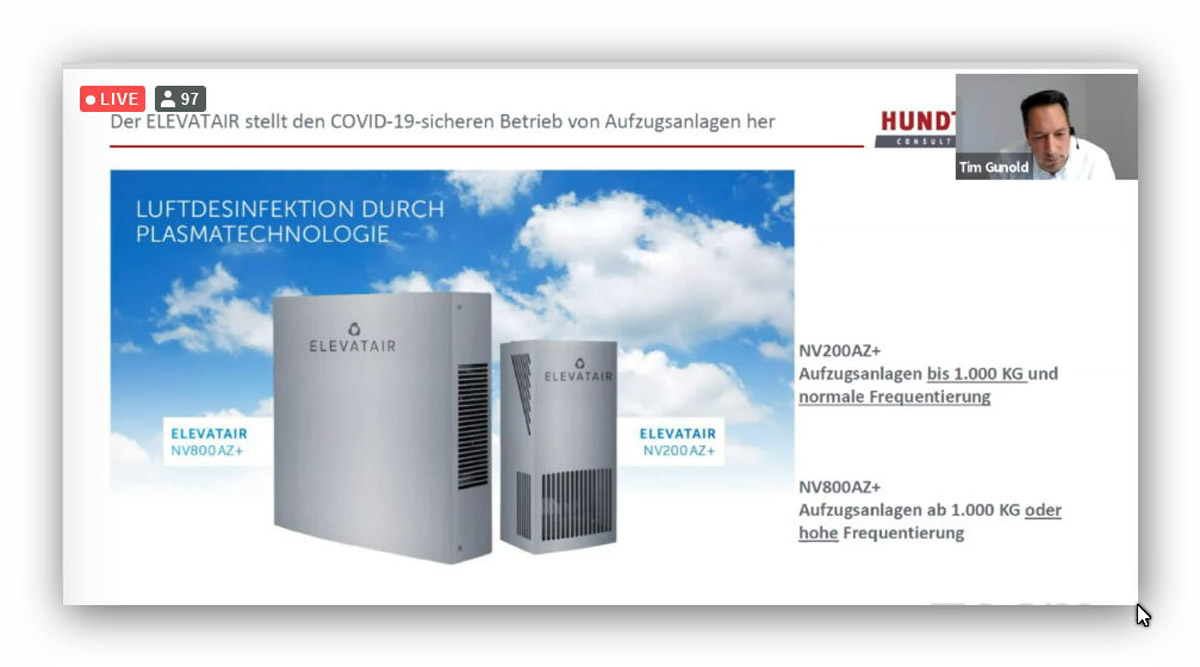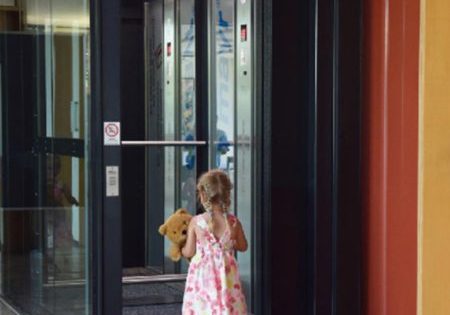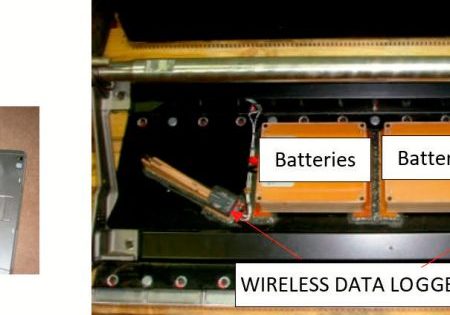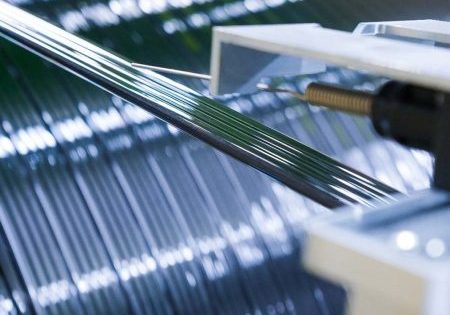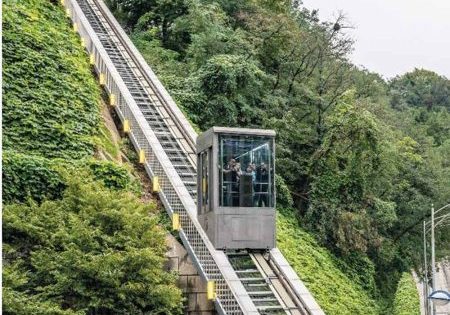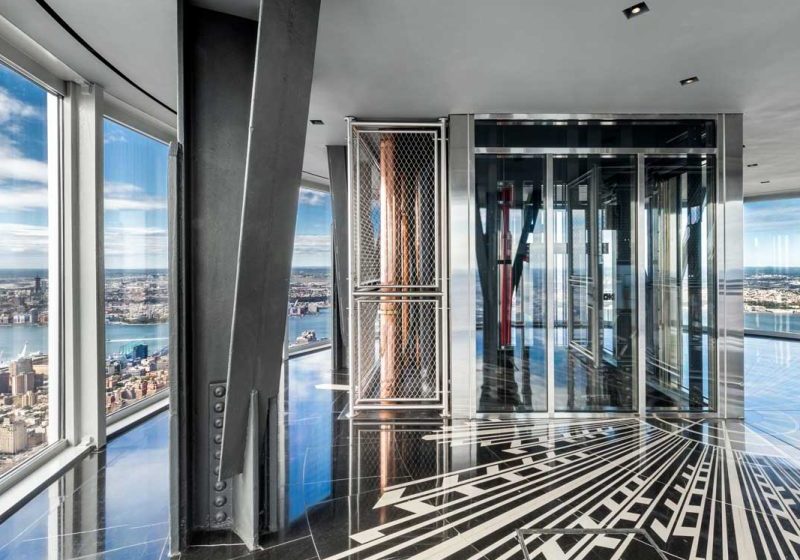How Will Elevators Become COVID-19 Safe?
Dec 5, 2020
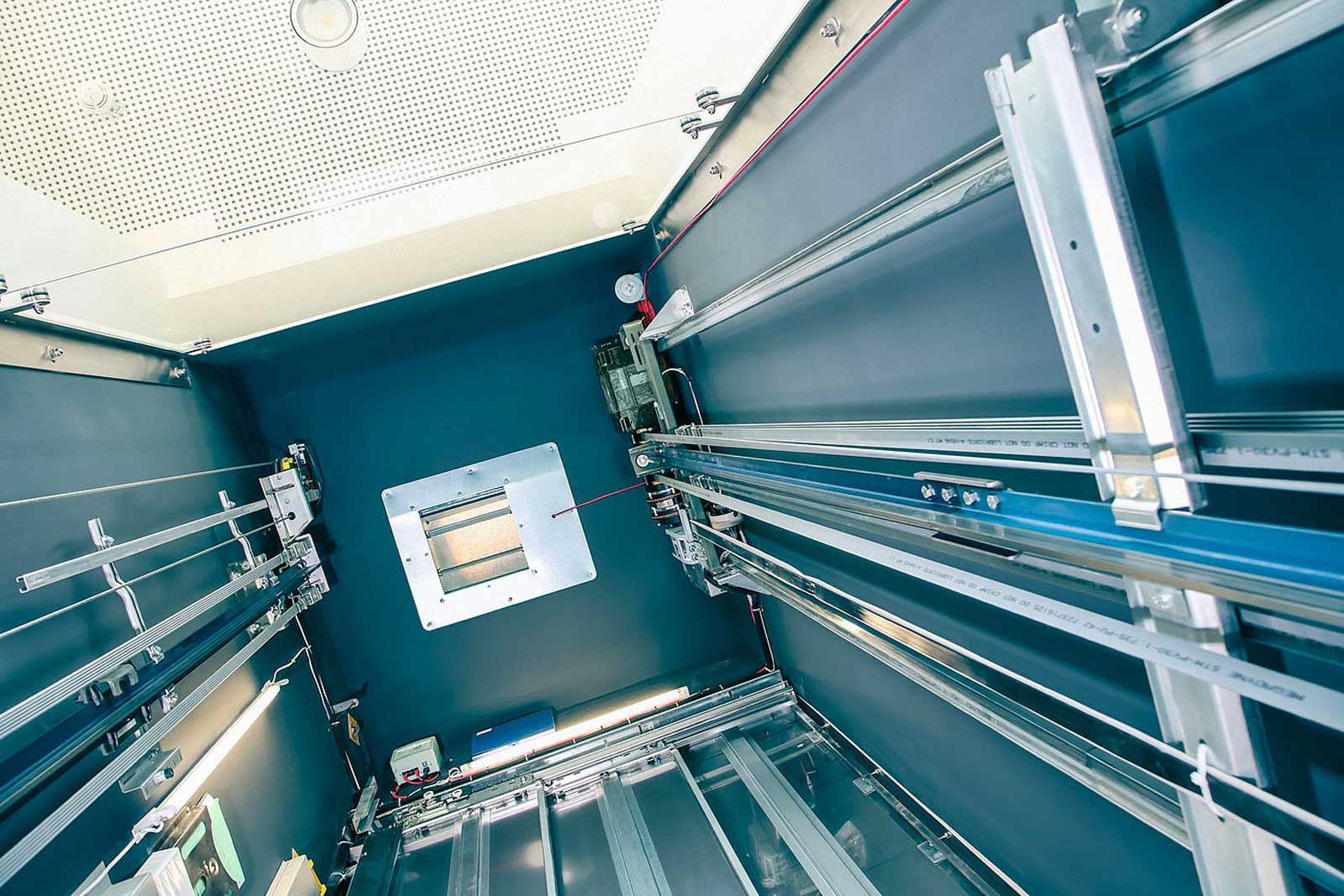
E2 Forum Building Technologies experts discuss problems and solutions.

In October, during the fourth in a series of online events, E2 Forum Building Technologies Experts asked and answered the question “How do elevators become COVID-19 safe?” The focus was on security and hygiene in shopping centers, the issue of restarting office buildings with the elevator as a possible risk and potential solutions for a virus-free elevator car were presented. The organizer was again Builtworld, with partner Messe Frankfurt.
Wolfgang Moderegger of Builtworld directed the one-hour event with purposeful questions. The experts discussing were:
- Tim Gunold, CEO, Hundt Consult
- Tanja Zirnstein, CEO, UVIS UV-Innovative Solutions
- Sascha Khabiri, head of field service/sales service Germany, Austria and Switzerland, thyssenkrupp Elevator
- Christian Schlicht, director, center management/facility management, ECE
- Martin Müller, business development and innovation, BlueKit.
Almost 100 people watched and listened live and participated in the lively chat. The number of visitors to the video had grown to almost 170 in October. It is available at bit.ly/38qDI5n.
Healthy Shopping
Schlicht kicked off with, “ECE: The Security and Hygiene Concept in Shopping Centers.” There has always been a security and hygiene concept. In it, medical, organizational and technical topics are interwoven. The hygiene concept has a modular structure, making it applicable throughout Europe. New technologies are regularly monitored. The quick feedback from customers helps in shopping center operations.
The first hygiene solutions were already tested in 2018; i.e., well ahead of the COVID-19 outbreak. And even with the pandemic, operation of the 2,000 or so conveyor systems (1,100 escalators/moving walks and 900 elevators) must continue. In this respect, the conveyor technology is an Achilles’ heel. If an elevator/escalator/moving walk is out of order, like a computer that does not start up in the morning, it leaves the users very dissatisfied.
For hygiene purposes, the UVIS disinfection module (presented in detail later during the forum) was installed in elevators in HH-Harburg. Result: Only treating the escalator is not sufficient. There are astonishingly many customer touch points, which led to the use of UVIS spray disinfection (also discussed later), which haptically creates a velvety soft surface. The measures were evaluated before and after. The customers were more content and felt safer. Their length of stay increased, which means added value for the shopping center. The investors or rental partners who pay for the measures were also satisfied with the measures.
How can teams be brought back to offices after their home office period? The techniques described are also important in office buildings and can be transferred to office complexes. The measure pays off on the trust of the user. Schlicht’s conclusion: hygiene in elevators is necessary.
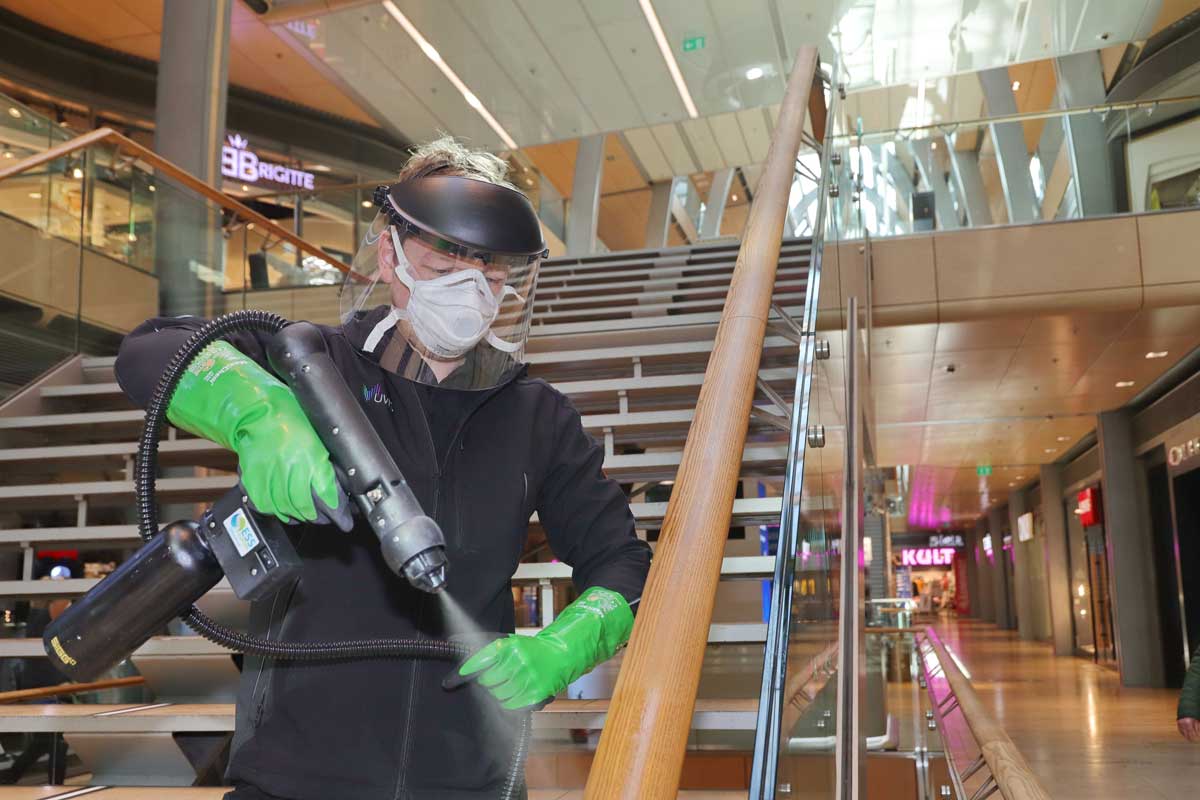
Potential Technical Solutions
Next, Khabiri reported that thyssenkrupp Elevator uses other manufacturers’ products, as well as its own, for hygiene. For example, the company has had a partnership with ECE and UVIS for some time. Customers have different requirements, which are to be served optimally. Hygiene specialists have been working in the company for decades. Since March, they have seen an increase in inquiries from retailers, housing associations and office communities, which have leveled off from an initial 100 to around 40 inquiries per day. Some of the enquirers bring solutions from companies that have only come into existence this year, since the COVID-19 outbreak. They have found these solutions on the internet or learned of them in other ways. It is important to advise the customers to help them select the right solution. The product used must have the promised efficiency to achieve the safety of customers, employees and users. At present, the focus of the solutions is on contactless push buttons. The question of how to get the users into the cabin is also being addressed with intermediate steps, such as extending door opening times when the car is stationary to increase air circulation. “Safety first” always applies.
Antimicrobial Coating of Contact Surfaces
Zirnstein presented the patented and CE-certified Escalite module, which is installed in the escalator and makes it up to 99.99% sustainably germ-free. Spraying TiTANO cleaner on all necessary surfaces reduces germs by up to 99.9% for one year. It is effective against viruses, bacteria and fungi; only the duration of exposure is different. This technology was launched used prominently in the elevator of the Europapassage shopping mall in Hamburg, Germany. Important surfaces to be treated include door handles, door rails and elevator panels. Customers determine where they want the coating used.
Air Purifier in the Cabin
Gunold is currently working on, among other things, the allocation and reduction of passengers inside the cabin. He presented, in detail, the Elevatair unit, which is available in two sizes. The plasma technology used in it for nine years now is effective against viruses, bacteria, odors and more in the air, both coming in and going out of the elevator car. In combination with a mask, it may allow full occupancy of the cabin.
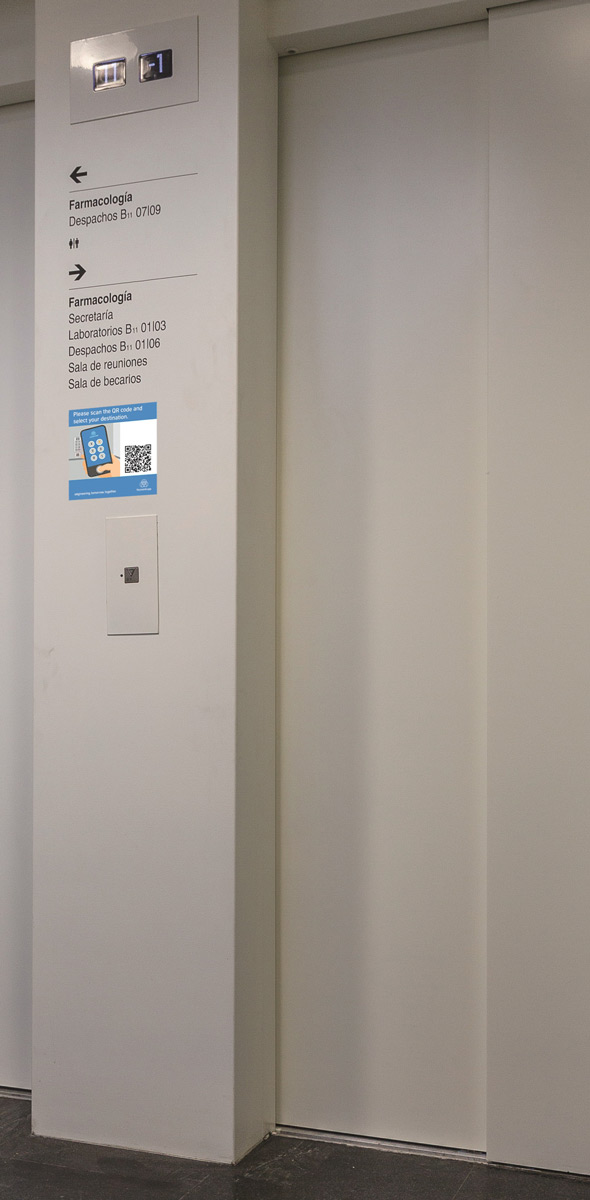
Optimization of Elevator Shaft Venting
Müller notes that his company has, so far, been mainly concerned with energy savings and smoke removal; now, air quality has been increasingly added. About 15,000 units are already installed in elevators in airports, hospitals, etc. throughout Europe. At the top of the elevator shaft is a window, and the shaft is ventilated by the chimney effect. The car is ventilated both when it stops and during the ride in the shaft. This allows air to pass from the car into the shaft and vice versa. The air then has to leave the building, controlled by the venting flap. In addition, whether the elevator is in use must be detected. For this, a sensor on the car travels along with the elevator, measuring CO2 and volatile organic compounds. Due to COVID-19, the venting cycles are now increased; the corresponding adjustment of the device is done during routine servicing. The solution, which was originally optimized for energy savings, now leads to a compromise with hygienic venting.
The technical solutions presented by the experts will help kill or weaken viruses and germs, which will improve the use of buildings again. There is not one single, proper solution; rather, each must fit the individual use and application. This is also reflected in the online survey that ran parallel to the discussion, in which the latter three solutions were rated by the participants as almost equally relevant.
Get more of Elevator World. Sign up for our free e-newsletter.
